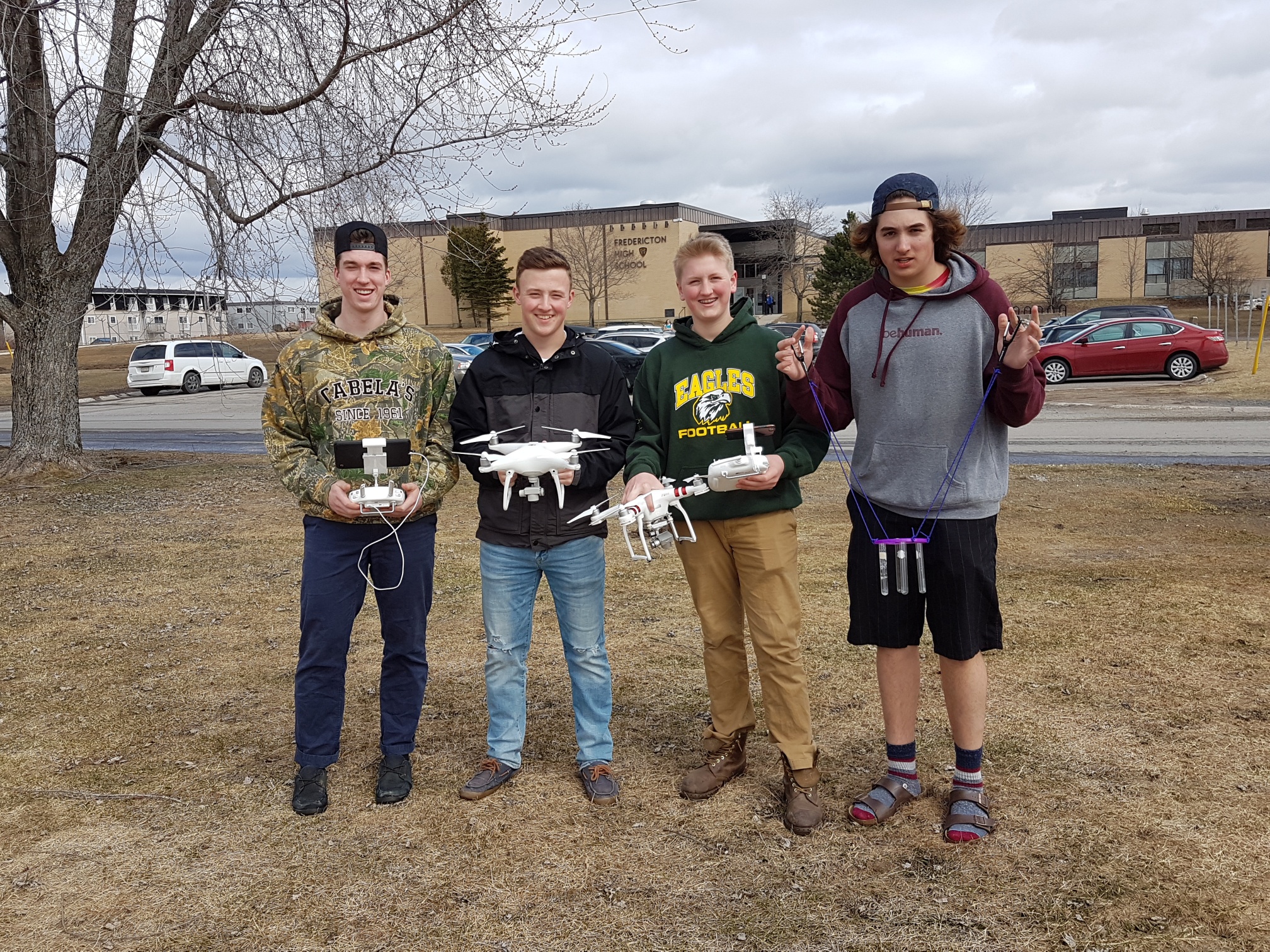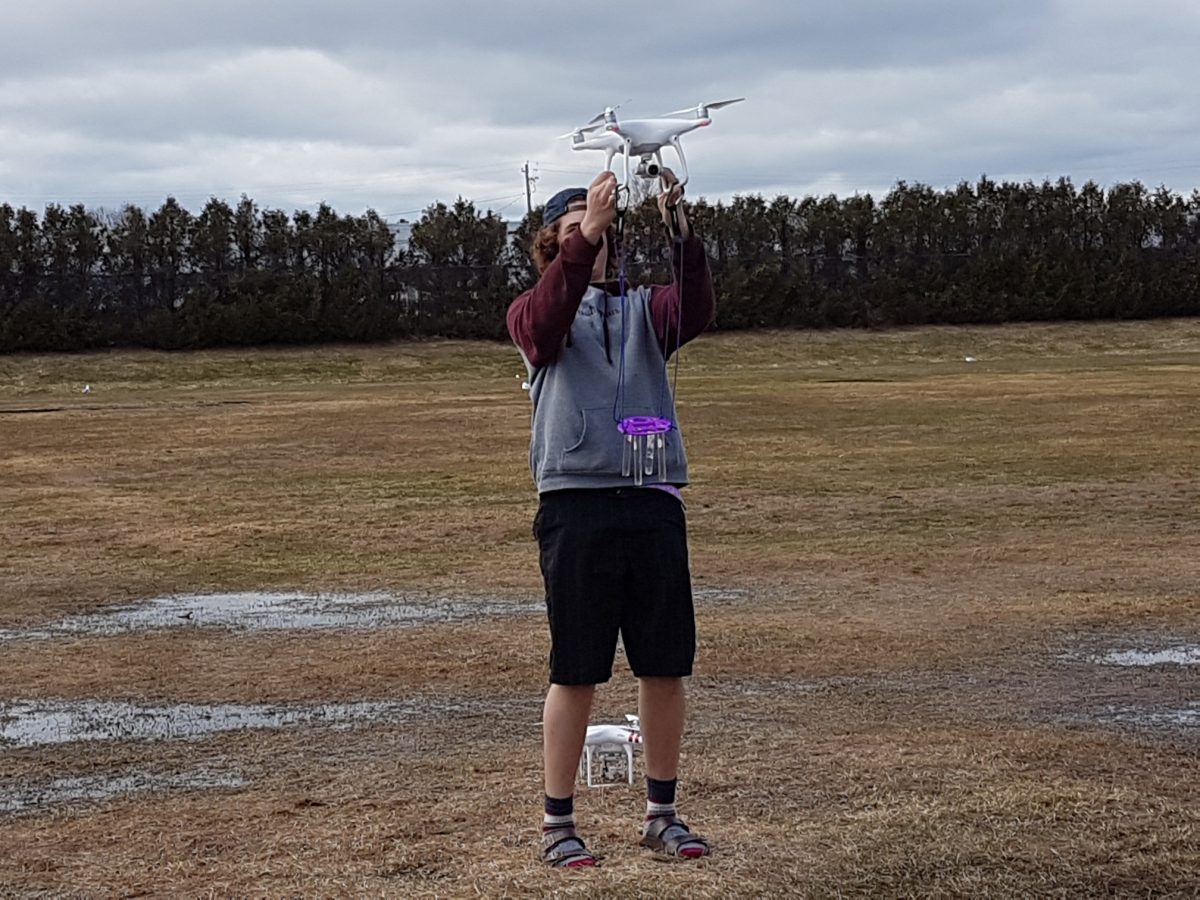Taking a chance on technology in the classroom
Students at Fredericton High School take collecting water samples to new heights

Fredericton High School teacher Carolyn Barnhart describes herself as “the anti-technology person.” Despite the self-diagnosis, she doesn’t shy away from introducing new gadgets into her classroom. “We need to meet the kids where they are. And [technology] is what they’re used to, and this is what they’re going to be using when they go out into the workforce,” she says.
Last fall, she brought an unmanned aerial vehicle—better known as a drone—into her environmental studies class. “I challenged the students to find an environmental problem the drone could help solve.”
The results: “Beyond my wildest imagination,” says Barnhart.
Inspired students
Located minutes away from Fredericton High School is the school’s Wetland Centre of Excellence, Corbett Brook Marsh, an 8.9-acre (3.64-hectare) forested wetland. Barnhart often takes her environmental studies class there to learn about wetland ecosystems through hands-on activities.
One of these activities: collecting water samples. Inspired by Barnhart’s challenge, Grades 11 and 12 students Will Marshall, Nathan Hoyt, David Nash and Brandyn Cooke asked their teacher: what if they collected a water sample using the drone?
They’d learn more about the ecosystem’s filtering capabilities, and limit their footprint on the area, they argued. “By using a drone, we aren’t impacting the vegetation at the wetland,” says Nathan. “And by not sending boats out to do water sampling we’d avoid gas leaks, or cross contamination that can occur when you move a boat from one body of water to another,” adds Will.
Collecting one water sample proved easy for the students, who had quickly perfected their piloting skills. “I upped the challenge,” says Barnhart. “[I said] now get multiple samples.”
With that, the four students undertook the project they’ve dubbed: ESdrone2k16.
Developing ESdrone2k16
In order to collect several water samples, Nathan, Brandyn, Will and David would need to develop a robotic attachment for the drone. No easy task. It’s a project that’s required a major commitment from the students.
Using 3D printing and software, robotics, coding, as well as their problem-solving skills and ingenuity, the group assembled four prototypes by mid-March.
The process can be challenging, they say. “It gets frustrating at points. But we work through it together, so it turns out to be alright,” says Brandyn.
The students’ fifth (and potentially final) prototype features two attachable platforms that carry four test tubes. A sensor dangles between the two platforms and when it comes within 10 cm of the water surface, it triggers a robotic mechanism that fills one of the test tubes.
Will, Brandyn, David and Nathan presented their design on April 7 at the River Valley Regional Science Fair, at the University of New Brunswick. ESdrone2k16 tied for first place.

The students’ work has impressed their teacher. “We are pretty proud,” says Barnhart. It’s also caught the attention of the conservation and technology communities, too. “It’s just incredible what these students are doing,” says DUC education specialist, Samantha Brewster.
DUC purchased a new drone for Fredericton High School, with funding from the New Brunswick Environmental Trust Fund. “It’s awesome,” says Will of the new drone.
Back to the beginning
So how do you introduce a drone, or any new technology, into your classroom, when as a teacher it’s unfamiliar to you?
“With lots of support,” says Barnhart. Throughout the ESdrone2k16 project, the high school teacher and her students have worked closely with DUC and Atlantic-based, not-for-profit Brilliant Labs, which “supports the integration of creativity, innovation, coding, and an entrepreneurial spirit” in K to 12 classrooms.
“These students may have begun this project because they were fascinated with the novelty of operating a drone. But that novelty quickly turned into an environmentally conscious project,” says Jacob Lingley, a regional director at Brilliant Labs. “The students are taking ownership of their learning,” he adds. “And whether their platform works as they wanted it to or not—they have a lot to be proud of.”
And the students are impressed with what they’ve been able to accomplish, they say.
“I couldn’t imagine at the start of the environmental science class that we’d be [developing this attachment]. But…I find it incredible how far we’ve come for a group of four regular high school students,” says David.



